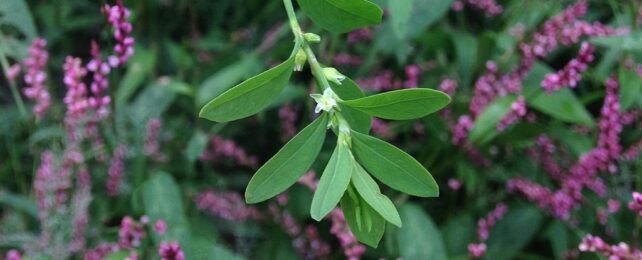According to a new study, some wild plants are predisposed to "taming," similar to how some wild animals have attributes that made them easier for ancient humans to tame.
This might explain why our ancestors targeted certain plants to become crops. In attempting to re-tame wild versions of plant species that ancient farmers previously domesticated, researchers have made intriguing discoveries about how the process works.
Taming is a necessary first step in domesticating wild animals, but it might only work in species with tamable traits. Wolves were well-suited to befriend humans, for example, but many species lack the temperament and behavioral flexibility to vibe with us.
To be tamable, a wild animal must be capable of living among people without excessive fear or aggression. We can't apply that standard to plants, of course, but plants have less obvious barriers to domestication, with variability among species just like animals.
"We have no equivalent term for tameness in plants," says study author Natalie Mueller, an archeologist at Washington University in St. Louis. "But plants are capable of responding to people. They have a developmental capacity to be tamed."
Learning to tame wild plants was a game-changer for humans, enabling the agricultural revolution and, eventually, civilization. But how did people choose which plants to tame? Did they favor more tamable species, as they did with animals?
Based on research with crop progenitors – wild versions of plants that humans have domesticated in the past – Mueller and her colleagues say prehistoric plant domestication might have been surprisingly bilateral.
Their work with early indigenous North American crops shows that activities like clearing, fertilizing, thinning, and weeding trigger interesting reactions from some wild plants.
The plants reacted quickly to such pampering, with changes that make them easier to cultivate and more productive – effectively reinforcing the initial efforts of their caretakers.
As early farmers experimented with different plants, they would likely gravitate to species that seemed to cooperate like this, Mueller says.
"If plants responded rapidly in ways that were beneficial to early cultivators – for example by producing higher yields, larger seeds, seeds that were easier to sprout, or a second crop in a single growing season – this would have encouraged humans to continue investing in the co-evolutionary relationship," Mueller says.
The new study focused on erect knotweed (Polygonum erectum), a relative of buckwheat once farmed by indigenous people in eastern North America. The domesticated subspecies is now extinct, but the species still grows in the wild, making it a "lost crop".
The researchers explain that trying to re-tame the wild version isn't easy, partly due to seed dormancy. Wild plants often produce seeds with strict criteria for germination, which helps ensure they sprout at a suitable time in the wild.
Today, we're accustomed to growing plants already domesticated, often from seeds with looser germination rules. In many cases, we can just put a seed in soil, water it, and wait.
Wild plants have evolved a variety of germination inhibitors tailored to their native environments, which can make it hard to grow them elsewhere. Some seeds won't germinate unless they first experience a long chill, for example, as a way of timing their spring emergence in the wild.
Domesticated plants have shed many of these inhibitors. And in four seasons of trying to tame erect knotweed, the researchers saw how quickly a wild plant can begin to make that change.
Within their first season growing in a garden – which included standard perks like weeding and clearing for lower density – the plants responded by producing seeds that would germinate more easily.
"Our results show that erect knotweed grown in low-density agroecosystems spontaneously 'act domesticated' in a single growing season before any selection has occurred," Mueller says.
The knotweed's quick response to garden life was a behavioral change that created new evolutionary opportunities for the following generations.
"Some plants respond quickly and obviously to cultivation and care," Mueller says. "I think ancient people would have noticed that they could double their yields just by thinning out dense stands of plants."
Beyond its insights about the history of plant domestication, this study may also shed light on future attempts at "de novo domestication," the researchers say, or continuing our ancestors' quest to tame new crops from the wild.
Another important takeaway, according to Mueller, is that plants are not passive servants, but sensitive, sophisticated life forms that respond to the world around them.
"You can't explain plant domestication if you only consider the behaviors of humans," Mueller says, "because domestication is the result of reciprocal relationships between multiple species that are all capable of responding to each other."
The study was published in PLOS One.
